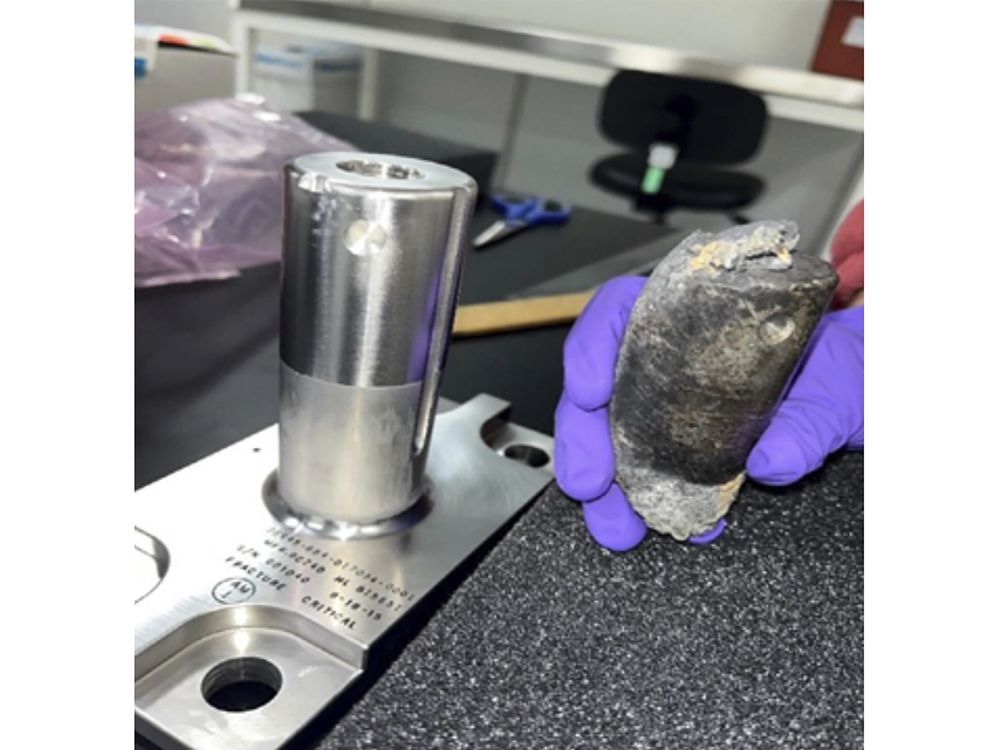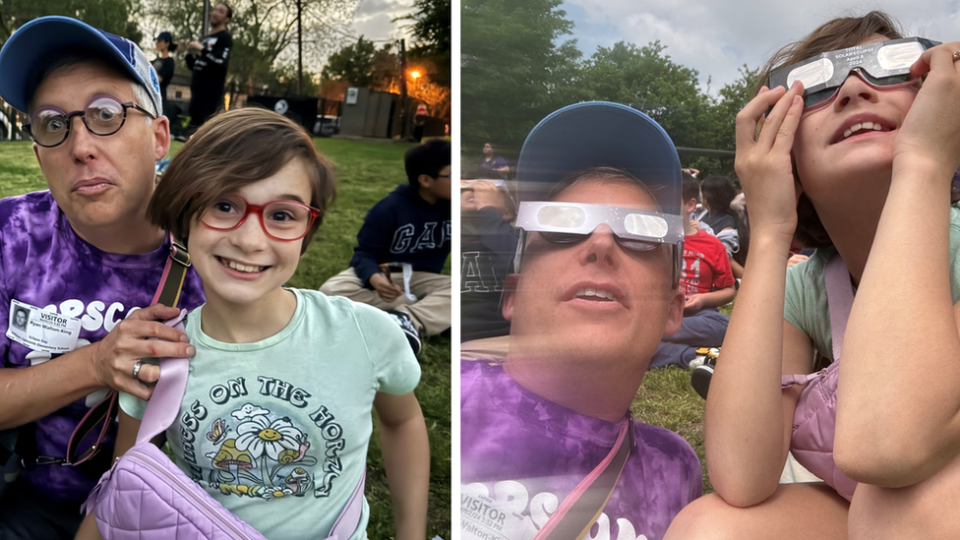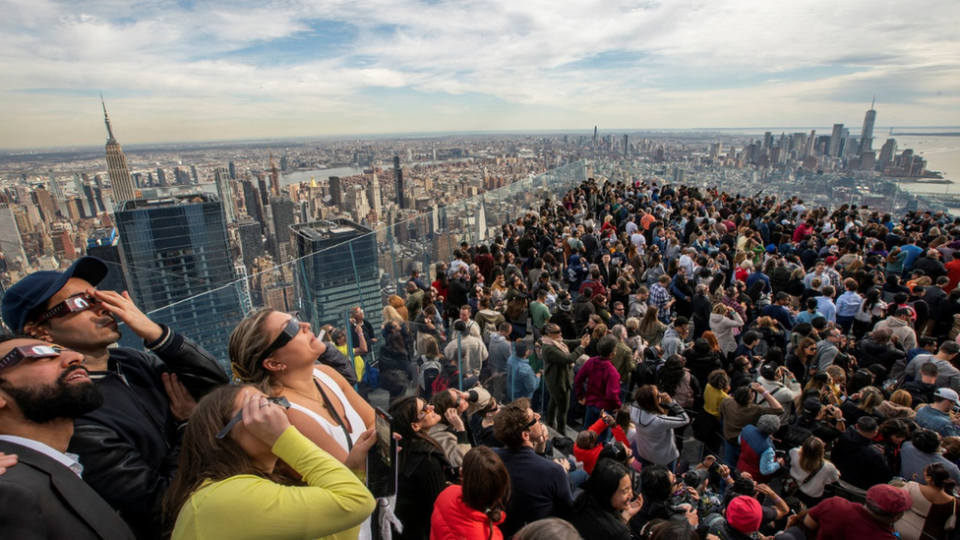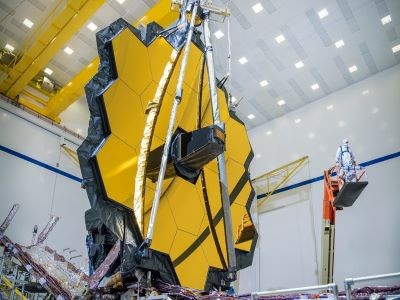Science
Four revelations from the Webb telescope about distant galaxies – Nature.com


NASA built its state-of-the-art James Webb Space Telescope to peer into the distant Universe and back towards the dawn of time — and it’s already doing so spectacularly. In the two weeks since Webb’s first science images and data became available for astronomers to work with, they have reported a flood of preliminary discoveries, including multiple contenders for what could be the most distant galaxy ever seen.
Webb’s images reveal a wealth of galaxies glimmering in the distant cosmos, appearing as they did just a few hundred million years after the Big Bang 13.8 billion years ago. The telescope’s astonishingly sharp pictures have shattered astronomers’ preconceptions about the early Universe.
“We had in mind an idea of what galaxies at these [distances] would look like, and how much detail we’d be able to see, but I think the reality is just kind of blowing our mind,” says Jeyhan Kartaltepe, an astronomer at the Rochester Institute of Technology in New York.
Here are some things astronomers are learning from Webb’s first observations.
There are an awful lot of galaxies way out there.
Because Webb detects infrared light, and because the expansion of the cosmos stretches light to redder wavelengths, the telescope is well suited to spotting galaxies that formed early in the Universe’s history. In its first observing programmes, which kicked off in June, Webb discovered many distant galaxies that lie beyond the reach of other observatories, such as the Hubble Space Telescope.
“It suggests what many of us have been arguing, that there are galaxies out there beyond what we saw with Hubble,” says Richard Ellis, an astronomer at University College London.
The era of early galaxies began at ‘cosmic dawn’, starting perhaps around 250 million years after the Big Bang, when the first stars formed and lit up the Universe. Later generations of stars amassed themselves into galaxies, which are the faint red blobs that Webb is beginning to discover.
Many of the Webb images are peppered with never-before-seen galaxies in the distant Universe. “There’s hardly any empty space that doesn’t have something,” Kartaltepe says.
One study combed through data from many of the distant galaxy fields Webb has observed so far, to analyse the rate at which stars formed in the early Universe. It found 44 previously unknown galaxies stretching back to within 300 million years of the Big Bang. Combined with 11 previously known galaxies, the findings show that there was a significant population of galaxies forming stars in the early Universe1. The results “re-affirm the enormous potential of forthcoming larger [Webb] programmes to transform our understanding of the young Universe,” wrote the team, led by Callum Donnan of the University of Edinburgh, UK, in a paper on the arXiv preprint server.
Many galaxies are competing for the ‘most distant’ title.
Perhaps the highest-profile rush is the stampede of research teams vying to identify the most distant galaxy in the Webb data. A number of candidates have been spotted that will need to be confirmed through further studies, but all of them would break Hubble’s record for the most-distant galaxy, which dates to around 400 million years after the Big Bang2,3.
One contender popped up in a Webb survey called GLASS that included another, slightly less faraway galaxy in the same image4. “The fact that we found these two bright galaxies, that was really a surprise,” says Marco Castellano, an astronomer at the National Institute for Astrophysics in Rome. He and his colleagues weren’t expecting to find any galaxies that distant in this small part of the sky. A second team also independently spotted the two galaxies5.
Astronomers characterize the distance of galaxies with a measure known as redshift, which quantifies how much a galaxy’s light has been shifted to redder wavelengths; the higher the redshift, the more distant the galaxy. The GLASS candidate has a redshift of about 13. But on 25 and 26 July, days after astronomers reported the GLASS galaxies, papers claiming even higher redshifts flooded the arXiv preprint server. “This is just the beginning of the beginning,” says Rohan Naidu, an astronomer at the Harvard-Smithsonian Center for Astrophysics in Cambridge, Massachusetts.
One candidate, at a redshift of 14, emerged in a survey called CEERS, one of Webb’s highest-profile early projects. The CEERS principal investigator, Steven Finkelstein at the University of Texas at Austin, nicknamed the object Maisie’s Galaxy, after his daughter6. Another study looked at the very first deep-field image from Webb, released by US President Joe Biden on 11 July, and found two potential galaxies at a redshift of 16, which would place them just 250 million years after the Big Bang7. And other arXiv papers speculate on other candidates, even out to redshifts of 208.
Some early galaxies are surprisingly complex.
Webb’s distant galaxies are also turning out to have more structure than astronomers had expected.
One study of Webb’s first deep-field image found a surprisingly large number of distant galaxies that are shaped like disks9. Using Hubble, astronomers had concluded that distant galaxies are more irregularly shaped than nearby ones, which, like the Milky Way, often display regular forms such as disks. The theory was that early galaxies were more often distorted by interactions with neighbouring galaxies. But the Webb observations suggest there are up to 10 times as many distant disk-shaped galaxies as previously thought.
“With the resolution of James Webb, we are able to see that galaxies have disks way earlier than we thought they did,” says Allison Kirkpatrick, an astronomer at the University of Kansas in Lawrence. That’s a problem, she says, because it contradicts earlier theories of galaxy evolution. “We’re going to have to figure that out.”
Another preprint manuscript suggests that massive galaxies formed earlier in the Universe than previously known. A team led by Ivo Labbé of the Swinburne University of Technology in Melbourne, Australia, reports finding seven massive galaxies in the CEERS field, with redshifts between 7 and 1010. “We infer that the central regions of at least some massive galaxies were already largely in place 500 million years after the Big Bang, and that massive galaxy formation began extremely early in the history of the Universe,” the scientists wrote.
And studies of galactic chemistry also show a rich and complicated picture emerging from the Webb data. One analysis of the first deep-field image examined the light emitted by galaxies at a redshift of 5 or greater. (Spectral lines that appear at various wavelengths of light correlate with the chemical elements composing the galaxies.) It found a surprising richness of elements such as oxygen11. Astronomers had thought that the process of chemical enrichment — in which stars fuse hydrogen and helium to form heavier elements — took a while, but the finding that it is under way in early galaxies “will make us rethink the speed at which star formation occurs”, Kirkpatrick says.
Closer galaxies are smaller than expected.
The surprises from Webb continue even a little later in the Universe’s evolution. One study looked at Webb’s observations of ‘cosmic noon’, the period approximately 3 billion years after the Big Bang. This is when star formation peaked in the Universe, and the most light was created.
Wren Suess, an astronomer at the University of California, Santa Cruz, compared Hubble images of galaxies at cosmic noon with Webb images of the same galaxies. At the infrared wavelengths detected by Webb, most of the massive galaxies looked much smaller than they did in Hubble images12. “It potentially changes our whole view of how galaxy sizes evolve over time,” Suess says. Hubble studies suggested that galaxies start out small and grow bigger over time, but the Webb findings hint that Hubble didn’t have the whole picture, and so galaxy evolution might be more complicated than scientists had anticipated.
With Webb just at the beginning of a planned 20-plus years of work, astronomers know they have a lot of changes ahead. “Right now I find myself lying awake at three in the morning,” Kirkpatrick says, “wondering if everything I’ve ever done is wrong.”
Science
NASA is seeking a faster, cheaper way to bring Mars samples to Earth – CityNews Toronto


CAPE CANAVERAL, Fla. (AP) — NASA’s plan to bring samples from Mars back to Earth is on hold until there’s a faster, cheaper way, space agency officials said Monday.
Retrieving Mars soil and rocks has been on NASA’s to-do list for decades, but the date kept moving forward, as costs ballooned. A recent independent review put the total cost at $8 billion to $11 billion, with an arrival date of 2040, about a decade later than advertised.
NASA Administrator Bill Nelson said that’s too much and too late. He’s asking private industry and the space agency’s centers to come up with other options to revamp the project. With NASA facing across-the-board budget cuts, he wants to avoid gutting other science projects to finance the Mars sample project.
“We want to get every new and fresh idea that we can,” he said at a news conference.
NASA’s rover Perseverance already has gathered 24 core samples in tubes since landing in 2021 at Mars’ Jezero Crater, an ancient river delta. The goal is more than 30 samples to scour for possible signs of ancient Martian life.
The space agency wants to get at least some of the collected samples to Earth sometime in the 2030s for no more than the $7 billion. That would require a spacecraft that goes to Mars to get the tubes and launches off the planet. Then it must rendezvous with yet another spacecraft that would bring the samples to Earth.
NASA’s science mission chief, Nicky Fox, refused to speculate at the news conference when the samples might arrive at Earth, given a new program and timeline, or even how many samples might be returned. That information will be included in any proposals, she said.
“We’ve never launched from another planet, and that’s actually what makes Mars sample return such a challenging and interesting mission,” Fox said.
Scientists are eager to analyze pristine samples from Mars in their own labs, far superior to the kind of rudimentary testing done by spacecraft at the red planet. It will take such in-depth testing to confirm any evidence of microscopic life dating back billions of years when water flowed on the planet, according to NASA.
The samples will help NASA decide where astronauts go on Mars in the 2040s, Nelson said.
NASA’s Jet Propulsion Laboratory in Pasadena, California, had been in charge of the sample project. It was hit by hundreds of layoffs earlier this year due to all the budget cutbacks. Nelson is seeking ideas from across the space agency, with the revamped program more spread out.
NASA hopes to receive any ideas by late fall.
___
The Associated Press Health and Science Department receives support from the Howard Hughes Medical Institute’s Science and Educational Media Group. The AP is solely responsible for all content.
Marcia Dunn, The Associated Press
Science
NASA confirms mystery object that crashed through roof of Florida home came from space station – Toronto Sun


Article content
NAPLES, Fla. (AP) — NASA confirmed Monday that a mystery object that crashed through the roof of a Florida home last month was a chunk of space junk from equipment discarded at the International Space Station.
Article content
The cylindrical object that tore through the home in Naples on March 8 was subsequently taken to the Kennedy Space Center in Cape Canaveral for analysis.
Article content
The space agency said it was a metal support used to mount old batteries on a cargo pallet for disposal. The pallet was jettisoned from the space station in 2021, and the load was expected to eventually fully burn up on entry into Earth’s atmosphere, but one piece survived.
The chunk of metal weighed 1.6 pounds (0.7 kilograms) and was 4 inches (10 centimetres) tall and roughly 1 1/2 inches (4 centimetres) wide.
Homeowner Alejandro Otero told television station WINK at the time that he was on vacation when his son told him what had happened. Otero came home early to check on the house, finding the object had ripped through his ceiling and torn up the flooring.
“I was shaking. I was completely in disbelief. What are the chances of something landing on my house with such force to cause so much damage,” Otero said. “I’m super grateful that nobody got hurt.”
Share this article in your social network
Science
Total solar eclipse: Continent watches in wonder – Yahoo News Canada
Across Mexico, the US and Canada, inside a ribbon of land stretching 155 miles wide but more than 4,000 miles long, tens of millions of people craned their necks, tilted their heads to the sky and watched in wonder as the day turned to night.
What many saw on Monday was a phenomenon like no other: the Moon moving between the Earth and the Sun, extinguishing its light in a total solar eclipse.
The path of totality spanned the continent, beginning over the warm sands of a Mexican beach town and darkening the skies above the crashing waters of Niagara Falls before ending its journey on the shores of Canada’s Newfoundland.
It left a sense of awe in its wake, a reminder of our planet’s place in the universe.
The eclipse was first seen around Mazatlán, Mexico, on the country’s western shores at 11:07 local time (18:07 GMT).
At first, the Moon’s outer edge seemed to just be touching the Sun. Then it devoured more and more until cheers erupted as all finally went dark – save for the silvery glow of the “corona” effect of the Sun around the Moon’s outline.

A thousand miles away in Dallas, Texas, 11-year-old Ady Walton-King was waiting, weeks of pent-up excitement ready to burst.
She had learned all about the eclipse in her fifth-grade class at Dallas Academy and on Monday morning she laced up her shoes and tucked four pairs of eclipse glasses into her pink purse – one for herself, one for each parent and one for her little sister, Abigail.
Just before it started, Ady sat down beside her dad, Ryan, on a school field in central Dallas and lifted her gaze upward.
And then it happened.
It all felt slow, she said, as she described the Texas afternoon turning dark. “It looked like the Moon was biting the Sun, but without the teeth marks.”
Clouds slid in and out, occasionally blocking the eclipse from view until the Sun had vanished, nothing left but little flares of light around the Moon.
“I didn’t think it would be like that,” Ady said. “It was really dark out. I thought it would be like evening dark, but it was pretty close to pitch black.”
The temperature dropped suddenly and, just as she had been taught, animals fell silent.
“As it started to get lighter the crickets were there, and the birds started singing. It was really crazy,” she said. “I’m sad it’s over.”
From there, the eclipse moved on, carving its path north-east through the United States.
For some, the solar phenomenon was marked by a personal milestone, with hundreds of Americans joining one of several mass wedding events dotted across the path of totality.


In Russellville, Arkansas, 300 couples from across the country signed up, saying “I do” just before the sky went black. As the sky brightened, the group cut wedding cakes and danced – all part of the aptly named Total Eclipse of the Heart festival.
Following the Moon one state over, in Ellsinore, Missouri, was amateur astronomer Darcy Howard, who had driven from her home in central Arkansas to be sure bad weather didn’t block her view.
She had seen many eclipses before today, two totals, one annular and two partials. “Each one has its own fingerprint,” she said.
Totality today, at around 13:56 local time (18:56 GMT) brought an “eerie twilight”, Ms Howard said, with dusky colours dotted all along the horizon. The corona was nearly as bright as a full moon. “The sense of other-worldliness was all around,” she said.
The 70-year-old has loved the cosmos since her childhood, since her father showed her the Big Dipper, the North Star and the Milky Way, and bought her her first telescope.
“I was hooked,” she said. “I can look through a telescope and see Jupiter… I can see Saturn. And when I see that in space, I know all is right with the world.”


By 15:13 local time (20:13 GMT), the total eclipse had plunged the midwestern state of Ohio into darkness.
In Cleveland, where eclipse-watchers were graced by clear skies, the Sun’s corona was clearly visible, a brilliant halo framing the Moon.
The stars came out in the middle of the day, a sight met with cheers and fireworks, a mid-April New Years Eve.
Many big American cities were not lucky enough to be on the path of totality – but the spectacles were still awe-inspiring. In New York, hundreds of people crowded on to the viewing platform of the Edge skyscraper in Manhattan to see what they could see.
They did not leave disappointed as the sun shrank to a crescent-like sliver of light that cast an unearthly pale gloom over the city.


Tourists had crowded along both sides of the border at Niagara Falls, where the eclipse path crossed from the US into Canada.
Here, the weather offered a formidable challenge, with thick grey clouds mostly obscuring the sky from view.
But just in time for totality – to the audible delight of the crowd – the clouds parted to reveal the black-hole Sun.
Nearby, on a Niagara City Cruise, 309 people celebrated by record-breaking – dressing up as the Sun to break the Guinness World Record for “Largest gathering of people dressed as the Sun”.
The relentless motion of the heavenly bodies meant that the phenomenon did not last long, and it was Montreal that next got its chance to be plunged into temporary night.
In Montreal, 20,000 people crowded onto a field on McGill University’s campus for an event held by the school’s Trottier Space Institute.
“We had been expecting 8,000,” programme administrator Caroina Cruz-Vinaccia said after. The weather was perfect, clear and bright skies. At the moment of totality, the crowd erupted at once, she said.
“I still can’t quite find the words for how cool this was,” she said. “We’re still coming down.”
Crowds were smaller on Newfoundland’s Fogo Island, on Canada’s east coast – one of the last places the totality could be viewed.
Bethany Downery, a Newfoundland native who works for the European Space Agency, tuned into the spectacular view from the Fogo Island Inn, nestled right against the Atlantic Ocean.
The skies were overcast, she said, but the clouds moved miraculously in time to catch near totality.
And with that, a day of collective wonder and celebration reached its conclusion. But it had left a permanent mark on many of those who had witnessed it.
In Dallas, a few thousand miles back along the path, Ady Walton-King was making plans.
Texas will not be in the path of totality again for another 300 years, so she’ll have to travel for the next one in North America, in 2044.
And by that time, she’ll be even more of an expert on total eclipses. “I want to be a scientist by the time that happens,” she said.
– With additional reporting from Brandon Livesay, Nada Tawfik, Nadine Yousif and Helena Humphrey


More on the solar eclipse
-
Media18 hours ago
DJT Stock Plunges After Trump Media Files to Issue Shares
-
Business17 hours ago
FFAW, ASP Pleased With Resumption of Crab Fishery – VOCM
-
Media17 hours ago
Marjorie Taylor Greene won’t say what happened to her Trump Media stock
-
Business18 hours ago
Javier Blas 10 Things Oil Traders Need to Know About Iran's Attack on Israel – OilPrice.com
-
Media16 hours ago
Trump Media stock slides again to bring it nearly 60% below its peak as euphoria fades – National Post
-



 Politics18 hours ago
Politics18 hours agoIn cutting out politics, A24 movie 'Civil War' fails viewers – Los Angeles Times
-
Art20 hours ago
Pinot & Pottery Bubble Art – Castanet.net
-
Business23 hours ago
A government mortgage policy that makes sense – with one glaring question – The Globe and Mail










